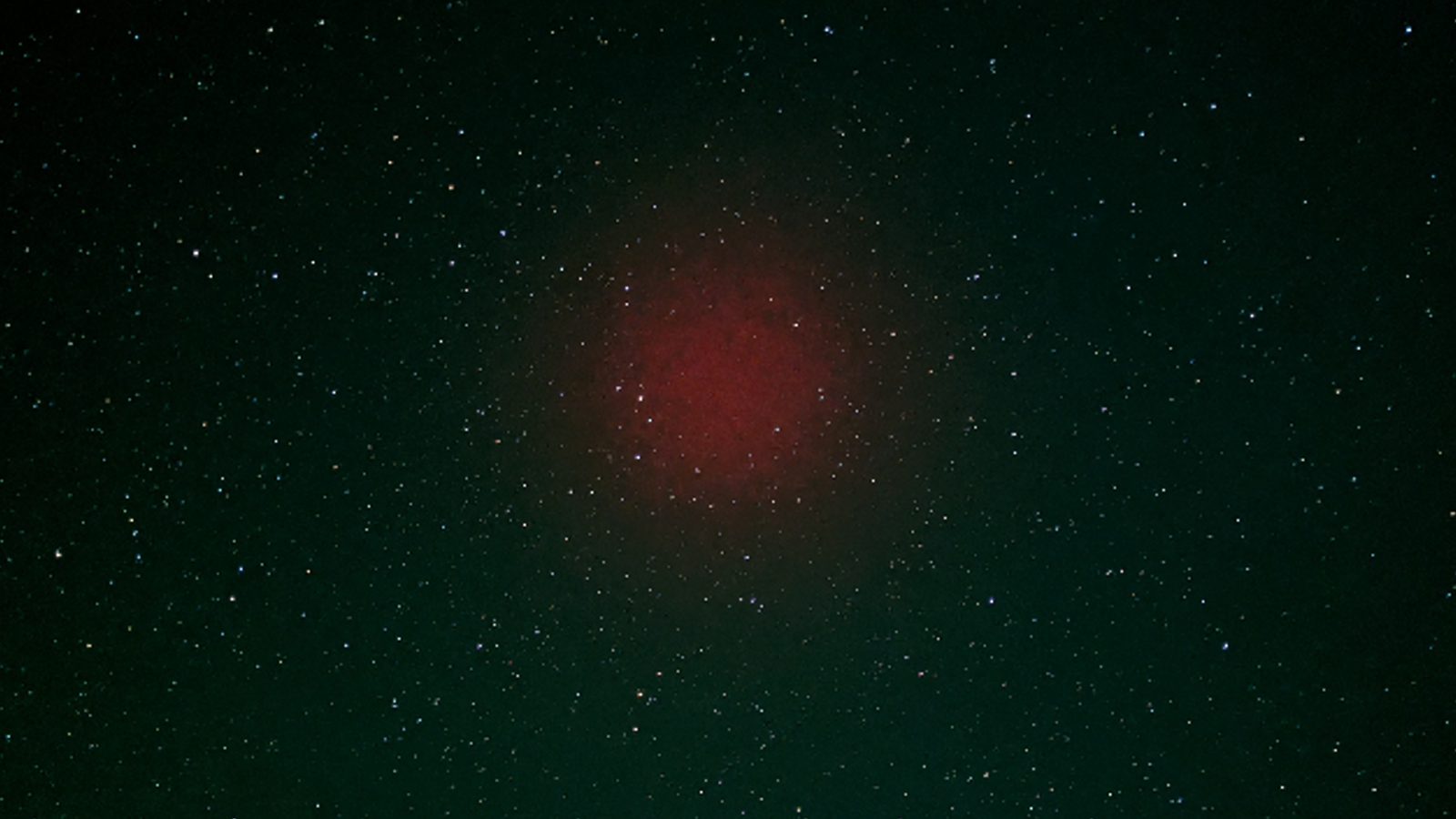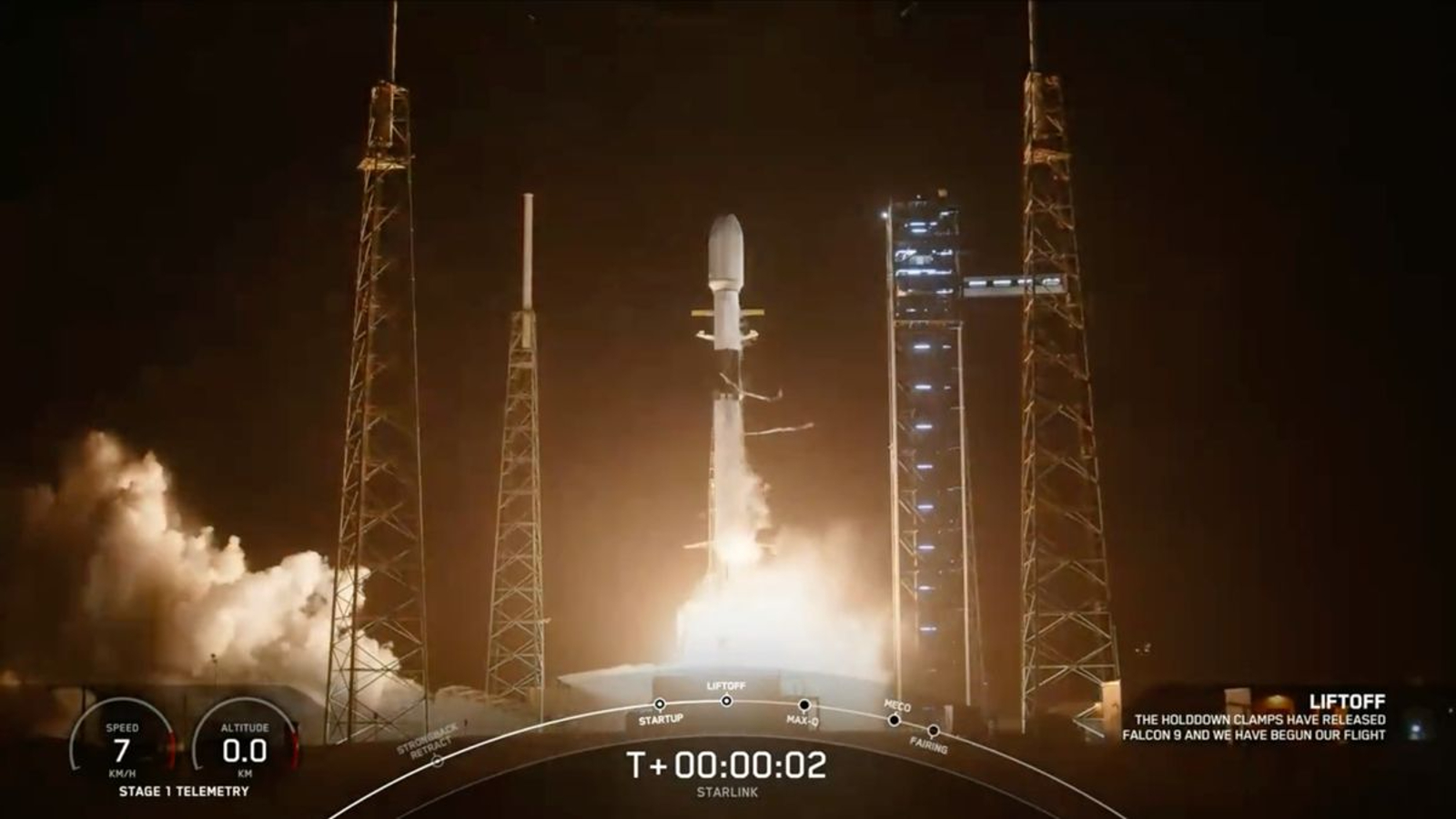Dying SpaceX rocket tears blood-red 'hole' in the sky over Texas — again
On April 10, a bright red atmospheric "hole" was spotted in the night sky above Texas shortly after SpaceX launched 23 Starlink satellites into space. It is the latest example of an increasingly common phenomenon caused by the company's dying rockets.

An eerie, blood-red orb of light was recently photographed in the night sky above Texas after SpaceX launched a satellite-laden rocket into space. The increasingly common phenomenon, known as a "SpaceX aurora," was the result of an atmospheric hole that was ripped open by the dying rocket.
On April 10, photographer Abdur Anwar spotted the bright light at around 3:15 a.m. EDT above Big Bend National Park in southern Texas. The light quickly faded out of view from the naked eye. But using a smartphone camera, Anwar was able to take a long-exposure image that captured the faint blob before it disappeared completely. However, he "couldn't explain" what it was, according to his Instagram post.
What Anwar managed to capture was the tail end of an aurora-like phenomenon that was triggered by a hole in the ionosphere — the upper part of the atmosphere between 50 and 370 miles (80 and 600 kilometers) above the Earth's surface where gases are turned into plasma by solar radiation. But this hole was not a natural occurrence. Instead, it was birthed by one of SpaceX's Falcon 9 rockets falling back to Earth, according to Spaceweather.com.
The rocket, which was carrying 23 Starlink satellites, launched from the Cape Canaveral Space Force Station in Florida at around 1:40 a.m. EDT — around 90 minutes before Anwar spotted the light, Live Science's sister site Space.com reported.
After separating from the rocket's reusable booster, the rest of the spacecraft deployed the satellites into low-Earth orbit. Then, the now-defunct rocket began a deorbit burn to land in the Pacific Ocean, according to Spaceweather.com. This was done to minimize the amount of space junk in orbit around our planet.
During the deorbit burn, the rocket released water and carbon dioxide into the atmosphere, which reacted with ionized oxygen atoms to create regular oxygen, temporarily reducing the amount of plasma in the ionosphere. This transformation excites these molecules and causes them to emit light as a result. The light has the same red wavelength as auroras given off by oxygen atoms but quickly disappears as the molecules reionize.
Related: Oops! US Space Force may have accidentally punched a hole in the upper atmosphere
Sign up for the Live Science daily newsletter now
Get the world’s most fascinating discoveries delivered straight to your inbox.

This phenomenon is becoming increasingly common, especially above Texas and the surrounding states where rockets that launch from Florida begin their deorbit burns.
Above the McDonald Observatory in West Texas, astronomers observe "2 to 5 of them each month," observatory researcher Stephen Hummel previously told Spaceweather.com.
SpaceX rockets can also create much larger ionospheric holes as they launch into space. For example, in July 2023, a Falcon 9 rocket created a massive red streak in the sky above Arizona after blasting off from the Vandenberg Space Force Base in California.
As the rockets deorbit, they can create other visually stunning light shows, such as "SpaceX spirals." These luminous whirlpools of light are created when the spacecraft's dumped fuel freezes outside the atmosphere, creating a vortex of ice crystals that reflect sunlight back to the surface. One of these striking spectacles was photographed above Iceland in March this year.
As far as we know, these visual phenomena are harmless and cause no long-term effects on our atmosphere. However, researchers are concerned about the payloads that the rockets are frequently deploying in space.
Starlink satellites are already proving to be a nuisance to astronomers because of their ability to photobomb telescopes and disrupt radio astronomy. This problem is also likely to get much worse as more and more satellites are placed in orbit.
There are also concerns about what these satellites, and other space junk, may be doing to our atmosphere when they inevitably fall back to Earth. Researchers have already noticed a sharp increase in the amount of metal particulate left behind in our skies as spacecraft burn up on reentry, and some have even warned that this pollution could destabilize our planet's magnetic field, although this has not been proven.

Harry is a U.K.-based senior staff writer at Live Science. He studied marine biology at the University of Exeter before training to become a journalist. He covers a wide range of topics including space exploration, planetary science, space weather, climate change, animal behavior and paleontology. His recent work on the solar maximum won "best space submission" at the 2024 Aerospace Media Awards and was shortlisted in the "top scoop" category at the NCTJ Awards for Excellence in 2023. He also writes Live Science's weekly Earth from space series.









